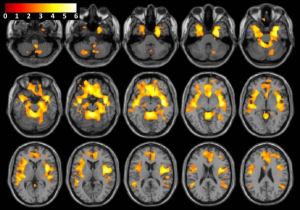
Humans, birds, fish and frogs appear to share the same ancient neural circuits that are responsible for a range of social behaviors, from flashy mating displays to aggression and monogamy. The biologists behind the discovery, from the University of Texas at Austin, say the brain circuitry in question has existed for more than 450 million years.
“There is an ancient circuitry that appears to be involved in social behavior across all vertebrates,” said Hans Hofmann, associate professor of integrative biology. “On a basic level, this tells us something about where we came from. A lot of the neural circuits that our brain uses for social behavior are actually quite old.”
The findings, appearing in Science, stem from an analysis of the 12 regions of the brain responsible for social behavior and decision-making in 88 species of vertebrates including birds, mammals, reptiles, amphibians and fish.
Hofmann and co-researcher Lauren O’Connell specifically looked at gene activity in two neural networks, one responsible for evaluating the relative importance of stimuli (the mesolimbic reward system), and one responsible for social behavior (the social behavior network). The former is important in drug addiction and romantic love, which manifests in the brain surprisingly like drug addiction. “In these key brain regions, we found remarkable conservation of gene activity across species,” reported Hofmann.
He cites monogamy, which has evolved multiple times independently in various vertebrate species. Monogamous behavior can be more advantageous for reproduction and survival under certain environmental conditions, and the research suggests that the evolution of this behavior is probably the result of small tweaks in a conserved neural network rather than evolving an entirely new one.
“Vertebrate brains are incredibly diverse, but we are finding the commonalities, even at the level of gene activity,” said Hofmann. “Now we have a framework with which we can ask whether there are molecular universals associated with social behaviors.” He described “molecular universals” as common genes and molecules shared across species that form the bases of behavior, and he now plans to go looking for them.
Related:
Discuss this article in our forum
Social behaviors revealed by finger length
Nicotine receptors found to play key role in social behaviors
Social interactions alter gene expression


















Comments are closed.